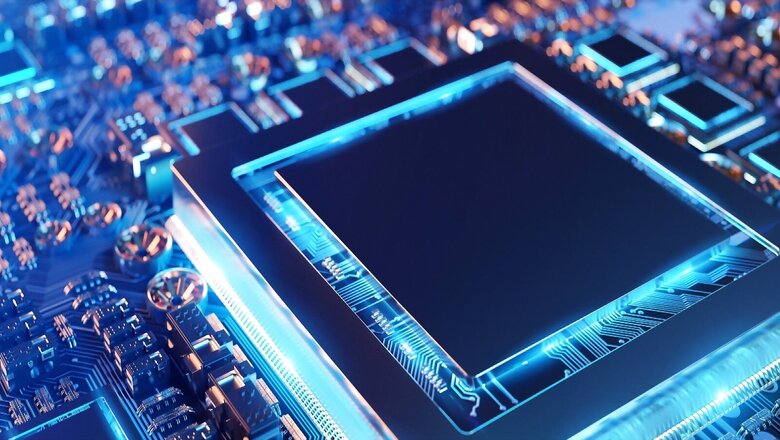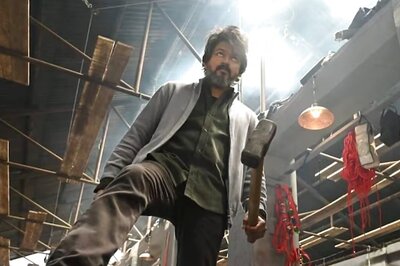
views
With the continuation of the Russia-Ukraine war, the world has been served a reminder of the fragility that exists in the world order as evidenced by the war threatening world peace. We see a similar fragility playing out in the Indo-Pacific region, where Chinese aggression is impacting the littoral nations in the South China Sea as well as the Indian Ocean. There is a need for the world’s democracies to come together on a common platform to create conditions which obviate the need for war to settle disputes.
In this context, in recent times, the India-Australia relationship has been one of the positive transformations in response to common challenges faced by the region. The countries are two such examples of important liberal democracies that are shaping the future of the Indo-Pacific region, based on their shared values for the rules-based international order and a free and open Indo-Pacific. The relationship has come a long way since the Modi government came to power in 2014. This is the first time that an Indian foreign minister has visited Australia twice in a year. S Jaishankar visited Canberra in February 2022 for the Quad foreign ministers’ meeting and later, to attend the Foreign Ministers Framework Dialogue. He met with his Australian Counterpart Penny Wong and Deputy Prime Minister Richard Marles, stating India’s priorities as “freedom of navigation in international waters, in promoting connectivity, growth and security for all.” Minister Wong, in her statement, reiterated the common interest that the two countries shared from the “region being stable and prosperous and respectful of sovereignty, where countries are not required to choose sides but make their own sovereign choices.”
These statements have set a tone for the future of bilateral relations in this partnership. New Delhi is clearly signalling to the world that the stability in the region is a shared vision between the two countries in light of Chinese revisionism. And Canberra, with its lighting up of the old Parliament House to welcome EAM Jaishankar, has highlighted the importance of India in this partnership. Wong further said that “our partnership is a demonstration that we understand that this period of change is best navigated together,” indicating that the relationship between the two countries is critical to the region being reshaped strategically and economically.
India and Australia have previously cooperated through the pandemic, Australia recognised the Indian-manufactured Covishield as well as the indigenous Covaxin. Tourism, since then, has also picked up for Australia with India being one of its top five markets and Indian arrivals the quickest to recover post-Covid. The Economic Cooperation and Trade Deal (ECTA) that was signed between the two countries last year is also a historic one. It is the first such trade deal in over a decade after the one with Japan in 2011. It aims at doubling the trade between the two countries in the next five years by not only providing supply chain support in critical minerals from Australia to India but also by opening up vast possibilities in the areas of pharmaceuticals and medicines from India to Australia.
However, to really offset Chinese revisionism, growing economies like India and Australia need to create strong foundations for the future in preparation for foreseeable challenges. The semiconductor industry is one key driver of economic growth, being a major component of the electronics and technology sector. As India continues to develop its economy and move towards a more technology-driven society, the demand for semiconductor-based devices is likely to increase. The Covid-19 pandemic is one such example of essential economic activity having to suddenly go digital. Situations like these have highlighted the centrality of chip-powered computers and smartphones in the modern age creating the need for India and Australia to ramp up their seriousness towards semiconductor production and make it a focal point of its recently elevated partnership. Semiconductors are essential to almost all sectors of the economy including aerospace, automobiles, communications, clean energy, information communication and technology and other critical infrastructure. But due to the global chip shortage, the demand has outstripped supply. Both Australia and India at the moment do not have semiconductor capabilities but according to my recent conversation with Chennupati Jagadish, President of the Australian Academy of Science and currently a distinguished Professor and Head of Semiconductor Optoelectronics and Nanotechnology Group in the Department of Electronic Materials Engineering, Research School of Physics, the Australian National University, there is a huge opportunity for both countries to collaborate in the field of semiconductors. He said that while silicon is a technology we focus on, as that’s where the computer chips are made, the investment in these FABs is enormous. Whereas compound semiconductors, which are not silicone-based and are used for making high-power and high-speed electronics as well as for optoelectronics like LEDs and lasers, can be a specific area where both countries can collaborate and cooperate closely as there are already advanced research groups working in this field.
The development of this industry is an opportunity waiting to be explored. In both countries in order to start these compound semiconductor-based industries, you do not need billions of dollars which one would require for starting a silicone FAB. The cost for compound semiconductors is much less and they can cover a broad spectrum. Training students, developing fundamental research to applied research, designing collaborations and commercialisation of technologies are all areas that India and Australia can cooperate on.
India has recently allocated Rs 76,000 crore ($9 billion) for the development of the semiconductors and display manufacturing ecosystem. Additionally, India has launched the Scheme for Promotion of Manufacturing of Electronic Components and Semiconductors (SPECS) as well as the Design Linked Incentive Scheme (DLI) which will nurture 20 domestic companies involved in semiconductor design and facilitate them to achieve a turnover of more than Rs 1500 crore ($15 billion) in the next five years. Australia too, has announced the $6 million Semiconductor Sector Service bureau S3B, aimed at driving the semiconductor industry in New South Wales. S3B will bring together leading experts from the University of Sydney, Macquarie University, UNSW Sydney, CSIRO and the Australian National Fabrication Facility. The Advanced Manufacturing Research Facility in Bradfield in Sydney’s West will provide facilities for advanced semiconductor and electronics manufacturing. This $260 million facility is expected to be operational by 2026.
The quad alliance, which both countries are a part of, has also joined hands to secure supply chains in critical areas like semiconductors proving that India and Australia have much potential to collaborate in order to become self-sufficient and counter any future challenges as major players in the Indo-Pacific. This is not the age for competition between two important democracies, this is the age of cooperation, especially when there are high stakes involved. And the semiconductor industry could be the way forward to counter any dominance in the Indo-Pacific.
The author is Consulting Editor, Global Order and Distinguished Fellow at India Foundation. Views expressed are personal.
Read all the Latest Opinions here


















Comments
0 comment